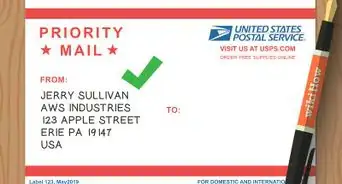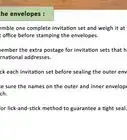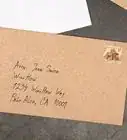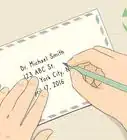This article was co-authored by Katherine Kirkinis, Ed.M., MA. Katherine Kirkinis is a Career Coach and Psychotherapist who has served as a career expert for Forbes, Medium, Best Life, and Working Mother Magazine, and as a diversity and inclusion expert for ATTN and Quartz. She specializes in working with issues of career, identity, and indecision. She has doctoral-level training in career counseling and career assessment and has worked with hundreds of clients to make career decisions through career assessments. She is pursuing a doctoral degree at The University of Albany, SUNY where her work focuses on diversity and inclusion, racism in the workplace, and racial identity. She is a published author and has been featured in academic journals as well as popular media outlets. Her research has been presented at 10+ national APA conferences since 2013.
There are 9 references cited in this article, which can be found at the bottom of the page.
This article has been viewed 153,691 times.
The most professional way to write an address is to use the US Mail guidelines. Writing the address correctly on the envelope before sending will ensure that your mail arrives safely and quickly to the desired destination. You can also take a few extra steps to make it more professional.
Steps
Envelope Templates
Writing a Business Address in USPS Code
-
1Use a person's name. No matter where the letter is going, it's best to address it to a person, if possible. Figure out who would be the most appropriate person for the letter to find. If you can't find a person's name, consider using a department, such as the HR department.
- Do your research to find out who you should send it to. For example, if you are sending in a resume, look around online to figure out the appropriate person. If you can't find a person, it's acceptable to call the company and ask who the letter should be addressed to.
-
2Use honorifics with the person's name. Honorifics are things like "Mr." and "Mrs." that go before a person's name. However, always pick a professional designation or title over MR, MS, MISS, or MRS. For example, if you're writing someone with a doctorate, you'd use "DR" before their name.[1]Advertisement
-
3Use the individual title and functional title, as needed. On the next line, place the individual or professional title of the person, such as "CERTIFIED PUBLIC ACCOUNTANT." On the next line, use the person's title within the company, such as "HEAD ACCOUNTANT." If you can only find one, use that one.[2]
-
4Add the division or department. If the letter needs to go to a specific department once it reaches the business, you need to include that department in your address. It should have its own line underneath the person's titles, such as "ACCOUNTING DEPARTMENT."[3]
-
5Place the company name next. The name of the company or main recipient goes next, if applicable. Like the other elements, it receives its own line, below the division or department the letter is being mailed to. Make sure to get the name of the company completely correct, such as "ARIEL'S ACCOUNTING FIRM."[4]
-
6Write the street address. Now, you're down to the street address, the place the business is actually located. The street number goes first, followed by a directional abbreviation (if applicable), such as "NW" or "S." Next, place the street name, as well as any suffixes to the street name, such as "ST."[5]
- You may also need to at a suite number, such as STE 118.
-
7Add the city, state, and zip code. Next, write the city and state. You don't need a comma between the two, and make sure to use the state code abbreviation. After that, use the 5-digit zip code, as well as the 4-digit extension with a hyphen in between. If you don't know the 4-digit extension, you can look it up using the other information you have on the USPS website.[6]
Using USPS Mailing Standards
-
1Make the font big enough. The font should be large enough so that's easy for a post office employee to read it. The standard is the font should be readable when held at arm's length. If your font is too small to read at this distance, switch to a bigger one.[7]
- USPS recommends at least an 8-point, legible font.[8]
-
2Skip punctuation. The USPS prefers that you don't use punctuation when writing out the address. That is, don't use commas or periods, even to divide the state from the city. Also, don't use periods after abbreviations such as "ST" or "NW."[9]
- However, you can use hyphens if the street number calls for it.[10] You can also use a hyphen between the 5-digit zip code and the 4-digit extension.
-
3Use uppercase letters. The USPS doesn't require that addresses use all uppercase letters. However, it is the preferred method for writing an address. Therefore, make sure to capitalize the whole address, not just the beginning of each word.[11]
-
4Find the standard abbreviations. The USPS has standard abbreviations for things like directional words, street suffixes, and states. Find the correct abbreviations for the words you're using on the USPS website, to make sure your letter gets to where you need it to go.[12]
-
5Place the addresses in the correct places. Remember, you also need to include your return address. Both addresses should be on the same side. Your address should be in the upper left-hand corner, while the main address should be over towards the right, but more centered vertically.[13]
Making the Document Professional
-
1Type the addresses. The best option is type the addresses. You can either use labels that you print on or print directly on the envelope. You can also just print on a plain piece of paper, cut the label out, and glue it on, though that can end up being messier.
- Your word processing software should have templates for printing on both labels and envelopes. Pick the template that matches the labels you bought, then type out the address for both the sending address and return address. Alternatively, pick the template that matches your envelope, then type in the addresses and print it.
-
2Consider using a full-sized envelope. When mailing a letter such as a resume, think about using a 12 by 9 envelope. That way, you don't have to fold your letter to fit in the envelope. When the recipient gets it, it will look more professional. Keep in mind, though, that larger envelopes cost more to mail.
- Keeping it uncreased also allows the employer to make copies more easily.
-
3Avoid using paperclips or staples. Paperclips and staples can make the resume look less professional. A better option is to use neither, and just make sure you have your last name and a page number on each page, so if one gets mixed up with other papers, it can be placed back in order.
-
4Skip mailing services for resumes. Some people use mailing services to send out large numbers of their resumes to potential employers. However, many of these companies use the same fonts and styles for all their resumes, and employers will reject them without even looking at them. Stick to doing it yourself.[14]
Expert Q&A
-
QuestionHow do you address an employer on a resume envelope?
 Katherine Kirkinis, Ed.M., MAKatherine Kirkinis is a Career Coach and Psychotherapist who has served as a career expert for Forbes, Medium, Best Life, and Working Mother Magazine, and as a diversity and inclusion expert for ATTN and Quartz. She specializes in working with issues of career, identity, and indecision. She has doctoral-level training in career counseling and career assessment and has worked with hundreds of clients to make career decisions through career assessments. She is pursuing a doctoral degree at The University of Albany, SUNY where her work focuses on diversity and inclusion, racism in the workplace, and racial identity. She is a published author and has been featured in academic journals as well as popular media outlets. Her research has been presented at 10+ national APA conferences since 2013.
Katherine Kirkinis, Ed.M., MAKatherine Kirkinis is a Career Coach and Psychotherapist who has served as a career expert for Forbes, Medium, Best Life, and Working Mother Magazine, and as a diversity and inclusion expert for ATTN and Quartz. She specializes in working with issues of career, identity, and indecision. She has doctoral-level training in career counseling and career assessment and has worked with hundreds of clients to make career decisions through career assessments. She is pursuing a doctoral degree at The University of Albany, SUNY where her work focuses on diversity and inclusion, racism in the workplace, and racial identity. She is a published author and has been featured in academic journals as well as popular media outlets. Her research has been presented at 10+ national APA conferences since 2013.
Career Coach & Psychotherapist Include just the first and last name of the person you're sending it to (no need to add Mr. or Mrs.)—make sure that the first and last name are capitalized, and that you've included any necessary titles. If you don't know who to address the cover letter and resume to, do some online research. Who is the head of the department to which you are applying? This info can usually be found on the company website; if not, call the company and ask for this information.
Include just the first and last name of the person you're sending it to (no need to add Mr. or Mrs.)—make sure that the first and last name are capitalized, and that you've included any necessary titles. If you don't know who to address the cover letter and resume to, do some online research. Who is the head of the department to which you are applying? This info can usually be found on the company website; if not, call the company and ask for this information. -
QuestionWhat is the standard font for a letter?
 Community AnswerArial or Times New Roman.
Community AnswerArial or Times New Roman.
References
- ↑ http://emilypost.com/advice/guide-to-addressing-correspondence/
- ↑ http://pe.usps.gov/text/pub28/28c3_011.htm
- ↑ http://pe.usps.gov/text/pub28/28c3_011.htm
- ↑ http://pe.usps.gov/text/pub28/28c3_011.htm
- ↑ http://pe.usps.gov/text/pub28/28c3_011.htm
- ↑ http://pe.usps.gov/text/pub28/28c3_011.htm
- ↑ http://pe.usps.com/text/dmm100/addressing-mail.htm
- ↑ http://pe.usps.com/text/qsg300/Q602.htm
- ↑ http://pe.usps.com/text/dmm100/addressing-mail.htm
About This Article
To write a professional mailing address on an envelope, start with the person’s name or department. If you use a name, include honorifics, like “Mr.,” “Mrs.,” or “Dr.” On the next line, place the individual or professional title of the person, like “Certified Public Accountant.” Include the person’s title within the company on the third line, such as “Head Accountant.” For letters that need to go to a specific department, include it in the address under the person’s titles. On the next line down, place the company’s name. Finally, write the street address, city, state, and zip code. To learn how to use proper punctuation when writing out your professional mailing address, keep reading!
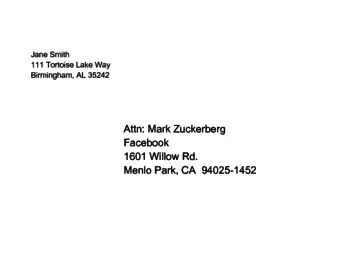
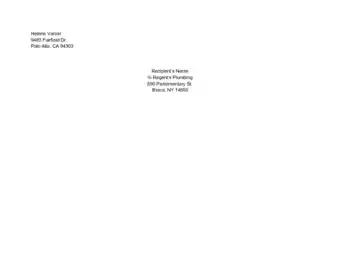
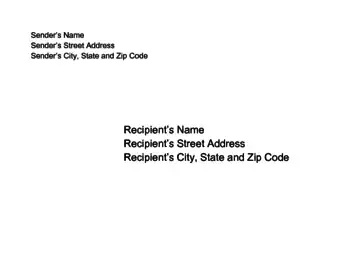

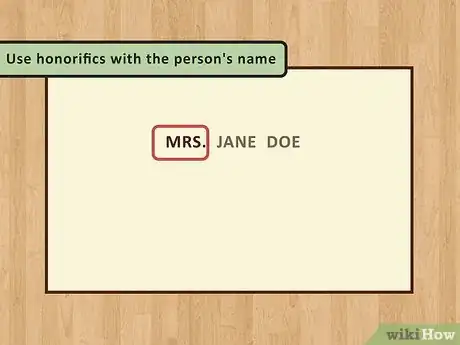
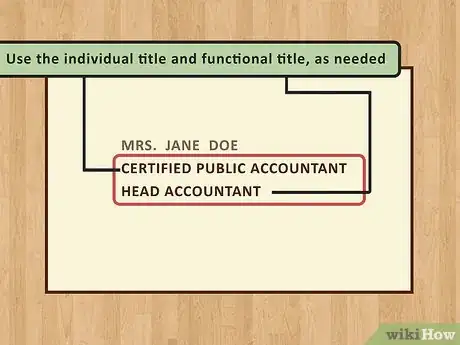
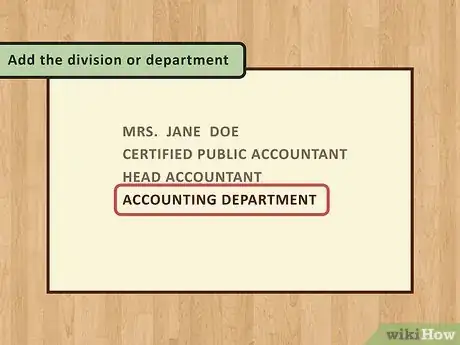
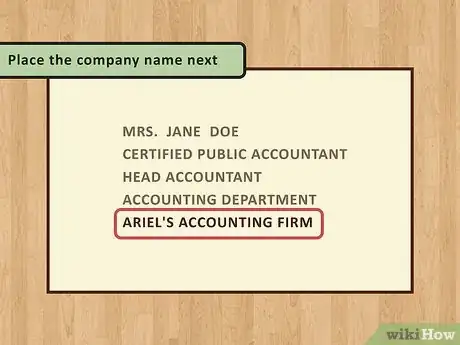
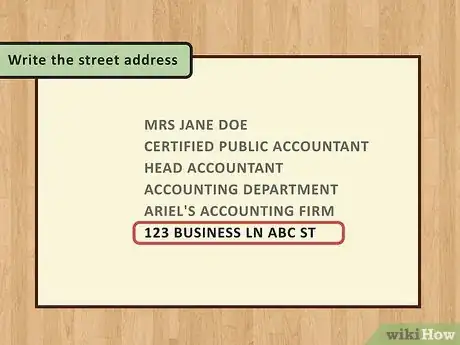
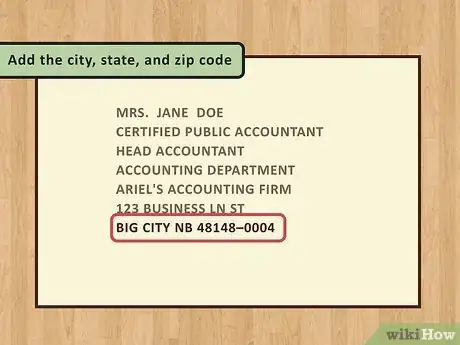
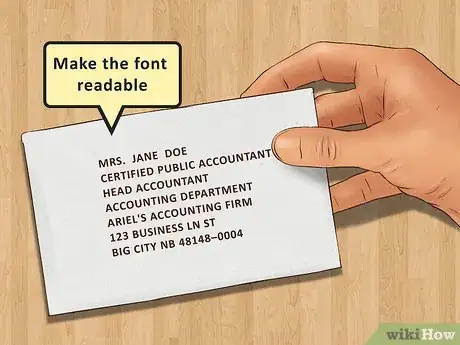
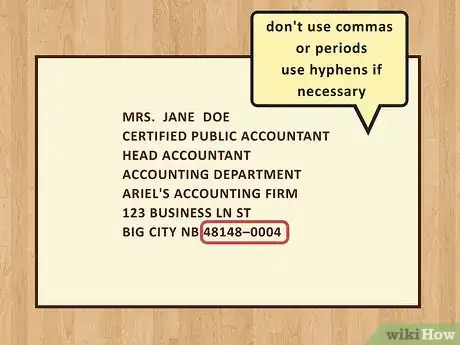
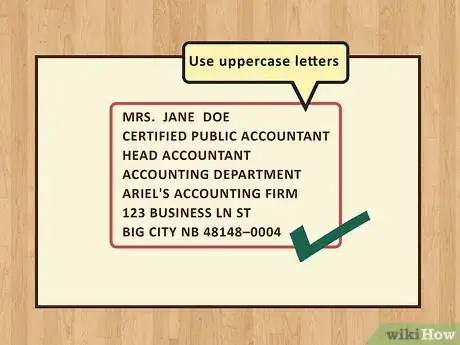
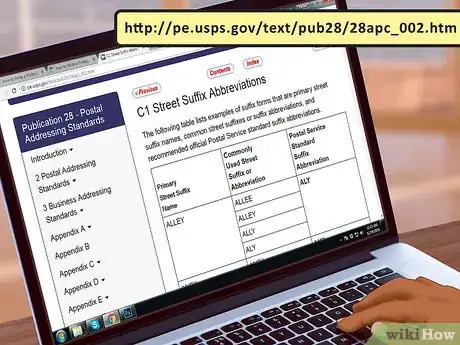
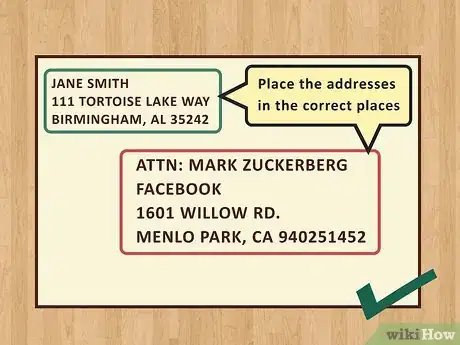
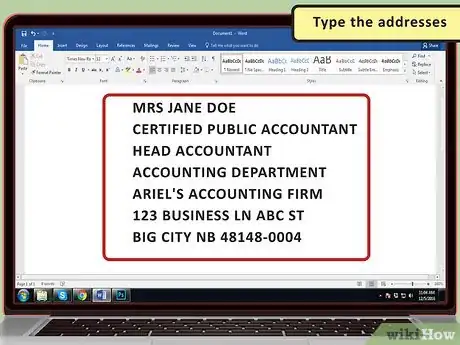
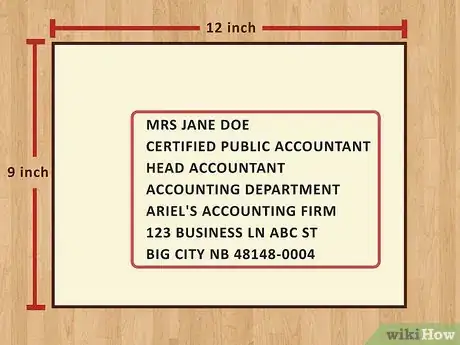
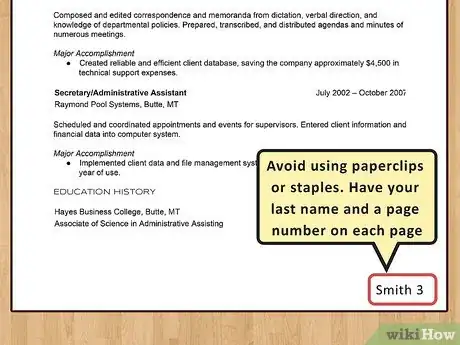

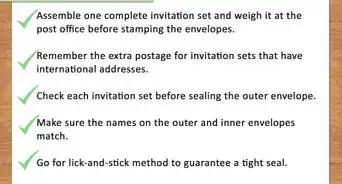

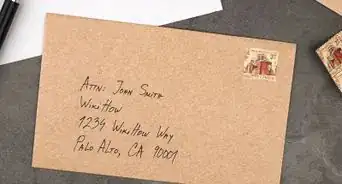
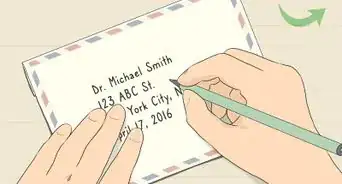
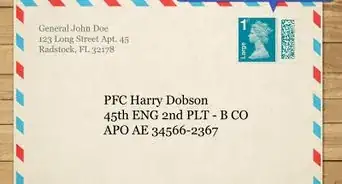
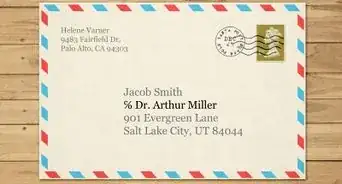
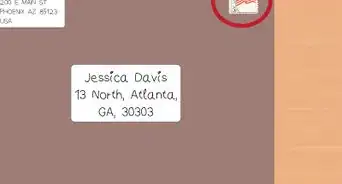
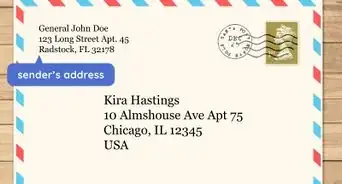
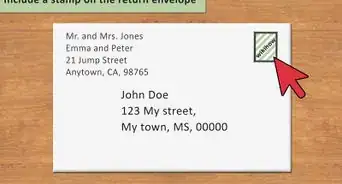
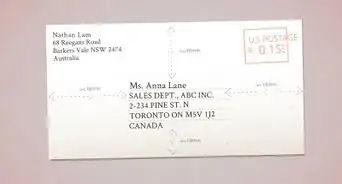
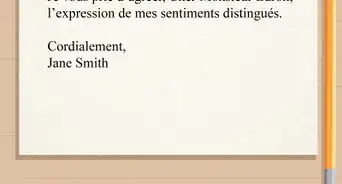
-Step-18-Version-3.webp)
